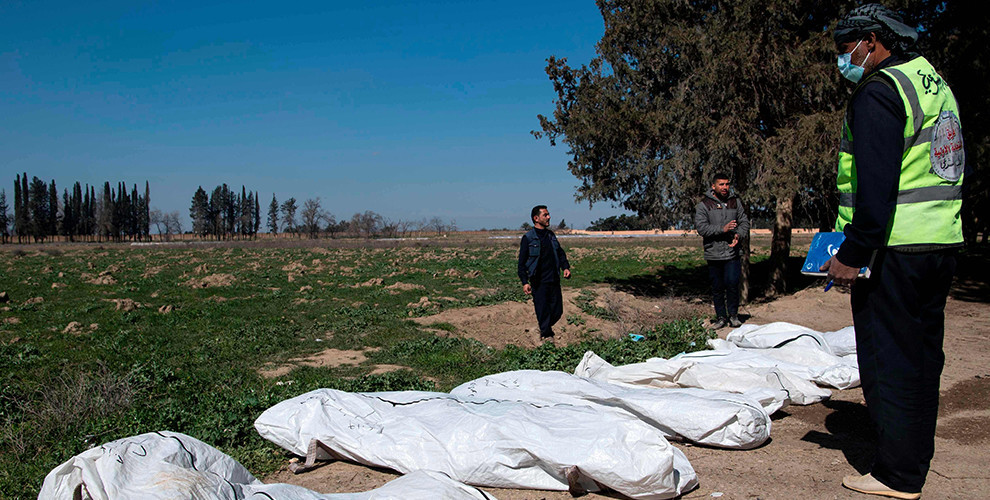Largest ISIS mass grave discovered in Raqqa
On a farmland outside the city of Raqqa, a large mass grave was found with at least 3,500 victims of the terrorist militia "Islamic State". It is the largest mass grave discovered in northern Syria so far.
On a farmland outside the city of Raqqa, a large mass grave was found with at least 3,500 victims of the terrorist militia "Islamic State". It is the largest mass grave discovered in northern Syria so far.

The mass grave left by the terrorist militia "Islamic State" on arable land outside the northern Syrian city of Raqqa appears to be the largest ever discovered since reconstruction began in the former capital of the so-called caliphate.
During the works in January, members of the reconstruction committee suspected the remains of some 800 jihadist victims. As it turned out, at least 3,500 bodies are said to have been buried in the mass grave in the agricultural suburb of Al-Fukheikha. The discovery is the largest example yet of the violence inflicted on the population during the reign of terror. Since the rescue work began, remains of more than 120 people have been dug up.

Possibly more than 4,000 bodies
"These are individual graves, but behind us, by the trees, are the mass graves of those who were executed by Daesh (ISIS). There are about 2,500 to 3,000 bodies suspected there, plus between 900 and 1,100 bodies in the individual graves, so at least 3,500 in total," said 56-year-old Asaad Mohammad, a local forensic assistant.
Three months after the liberation of Raqqa by the Syrian Democratic Forces (SDF) in October 2017, the city's Civil Council began recovering corpses from the mass graves laid by the ISIS. So far, the reconstruction committee has salvaged the remains of more than 3,800 ISIS victims. 560 of these bodies were identifiable and handed over to families for proper burial. The unidentified dead were buried according to the religious duties by the authorities.
Eight other mass graves have already been identified around the northern Syrian city, including one nicknamed "Panorama," from which more than 900 bodies had been exhumed. "Al-Fukheikha is the largest grave since ISIS came to Raqqa" in 2014, said Mohammad.

Missing foreign ISIS prisoners in al-Fukheikha?
Since the Raqqa division began its work in January 2018, it has exhumed more than 3,800 bodies, said the force's supervisor Turki al-Ali.
Among them are 560 that were identifiable and were handed over to their families for a proper burial, he told AFP.
The site at Al-Fukheikha could help identify even more of the several thousand people whose fates remain unknown, including foreigners imprisoned by ISIS.
"We've heard accounts from residents of Al-Fukheikha that they would see people gathering with someone in an orange suit," said Ali, referring to the garb in which ISIS would typically dress its executed captives.
US journalist James Foley was wearing such a suit when he was killed, and analysts believe footage of his death indicates he may have been killed around Raqqa.
Another American captive, Kayla Mueller, is thought to have died near Raqqa as well. Their bodies have never been recovered.
"These mass graves hold the answers to the fate of people who had been executed by IS fighters, who died in coalition air strikes, or who have been missing," said Sara Kayyali of Human Rights Watch.
Even as the battle against ISIS as a territorial force comes to an end, she told AFP, there was much more to be done.
"No matter how much we try to deny it, the work against ISIS is by no means over. It's likely the hard work is just starting."